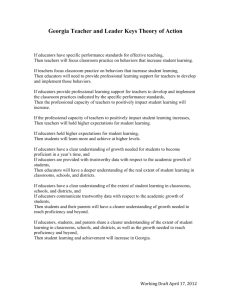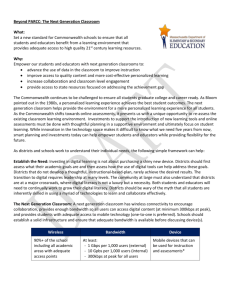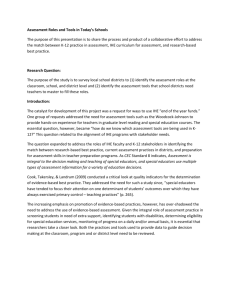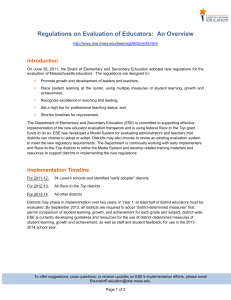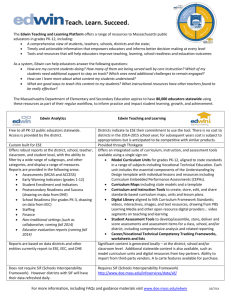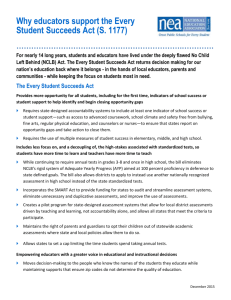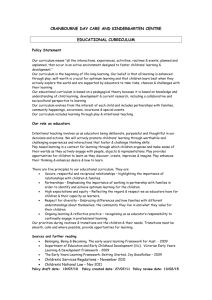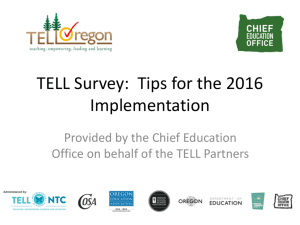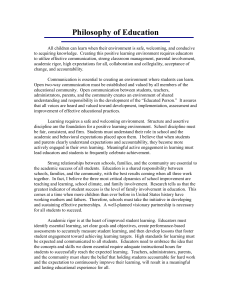Sample Opinion Editorial Connecting Our Local Classrooms to the
advertisement
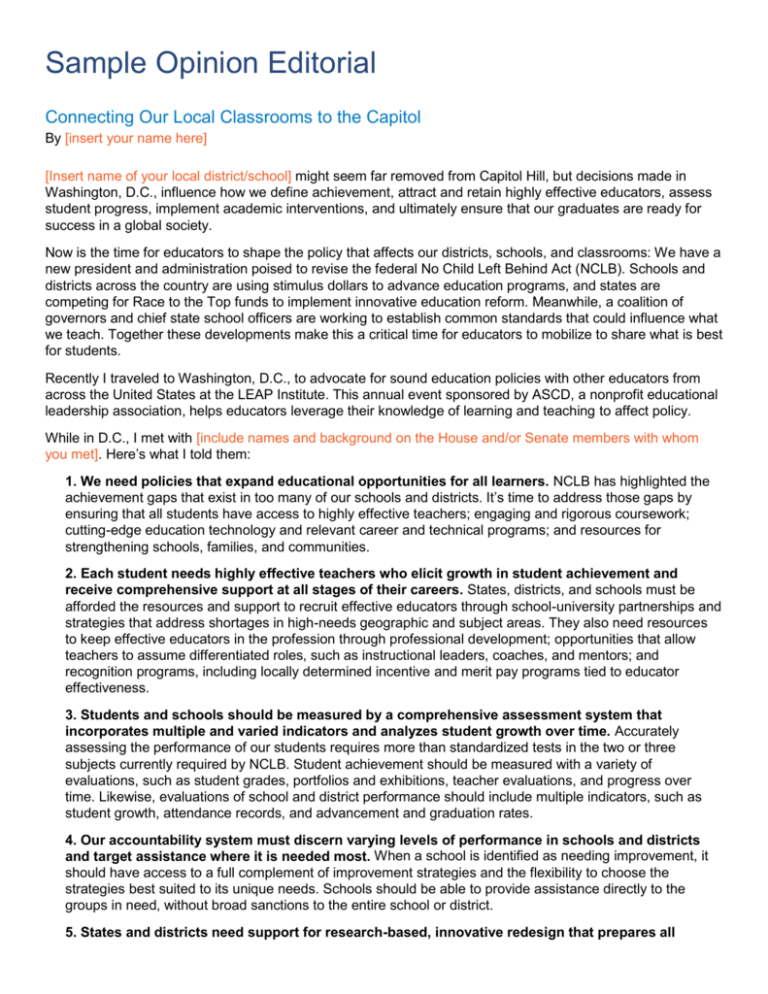
Sample Opinion Editorial Connecting Our Local Classrooms to the Capitol By [insert your name here] [Insert name of your local district/school] might seem far removed from Capitol Hill, but decisions made in Washington, D.C., influence how we define achievement, attract and retain highly effective educators, assess student progress, implement academic interventions, and ultimately ensure that our graduates are ready for success in a global society. Now is the time for educators to shape the policy that affects our districts, schools, and classrooms: We have a new president and administration poised to revise the federal No Child Left Behind Act (NCLB). Schools and districts across the country are using stimulus dollars to advance education programs, and states are competing for Race to the Top funds to implement innovative education reform. Meanwhile, a coalition of governors and chief state school officers are working to establish common standards that could influence what we teach. Together these developments make this a critical time for educators to mobilize to share what is best for students. Recently I traveled to Washington, D.C., to advocate for sound education policies with other educators from across the United States at the LEAP Institute. This annual event sponsored by ASCD, a nonprofit educational leadership association, helps educators leverage their knowledge of learning and teaching to affect policy. While in D.C., I met with [include names and background on the House and/or Senate members with whom you met]. Here’s what I told them: 1. We need policies that expand educational opportunities for all learners. NCLB has highlighted the achievement gaps that exist in too many of our schools and districts. It’s time to address those gaps by ensuring that all students have access to highly effective teachers; engaging and rigorous coursework; cutting-edge education technology and relevant career and technical programs; and resources for strengthening schools, families, and communities. 2. Each student needs highly effective teachers who elicit growth in student achievement and receive comprehensive support at all stages of their careers. States, districts, and schools must be afforded the resources and support to recruit effective educators through school-university partnerships and strategies that address shortages in high-needs geographic and subject areas. They also need resources to keep effective educators in the profession through professional development; opportunities that allow teachers to assume differentiated roles, such as instructional leaders, coaches, and mentors; and recognition programs, including locally determined incentive and merit pay programs tied to educator effectiveness. 3. Students and schools should be measured by a comprehensive assessment system that incorporates multiple and varied indicators and analyzes student growth over time. Accurately assessing the performance of our students requires more than standardized tests in the two or three subjects currently required by NCLB. Student achievement should be measured with a variety of evaluations, such as student grades, portfolios and exhibitions, teacher evaluations, and progress over time. Likewise, evaluations of school and district performance should include multiple indicators, such as student growth, attendance records, and advancement and graduation rates. 4. Our accountability system must discern varying levels of performance in schools and districts and target assistance where it is needed most. When a school is identified as needing improvement, it should have access to a full complement of improvement strategies and the flexibility to choose the strategies best suited to its unique needs. Schools should be able to provide assistance directly to the groups in need, without broad sanctions to the entire school or district. 5. States and districts need support for research-based, innovative redesign that prepares all children for the next steps in their education. This comprehensive redesign should make certain that young children are well-prepared for school, students successfully transition from the elementary to secondary grades, and high school graduates are equipped for success as active and engaged citizens. Education policy crafted without the input of practitioners will be flawed. At [insert name of your local district/school], we strive to ensure that each child is healthy, safe, engaged, supported, and challenged. That includes working with policymakers at all levels to build education policies that do not, in the words of U.S. Secretary of Education Arne Duncan, serve the interests of adults better than those of students. [Insert a brief sentence that includes your name, your occupation, and the name of your school or district.]
